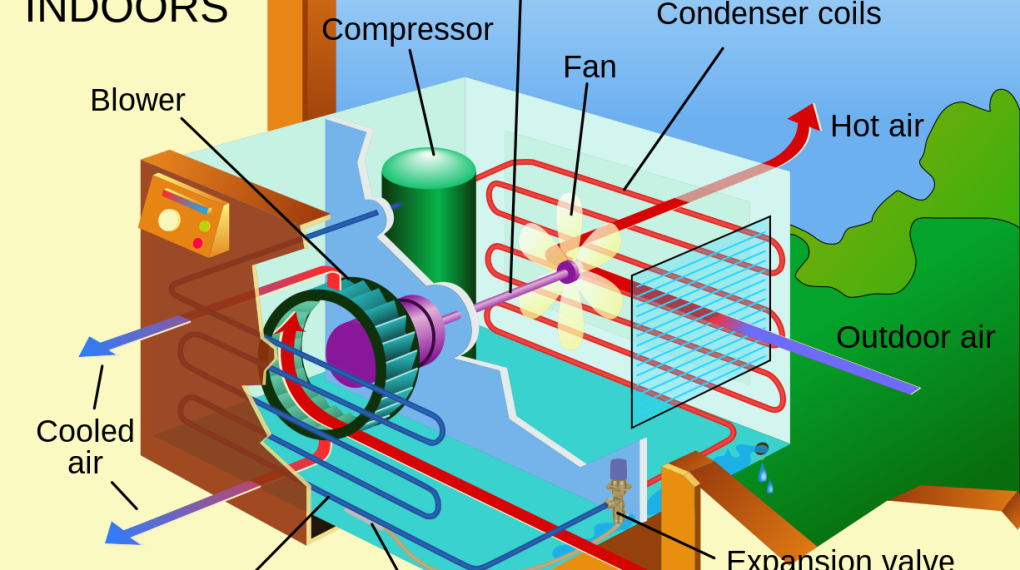How AC compressor works is a fascinating subject that’s more exciting than you might think. This central character in your air conditioning unit’s drama has a crucial part to play in the story of your summer comfort. Hang tight and get ready for an enlightening journey!

Table of Contents
Understanding the AC Compressor
AC compressor, what is it exactly? In layman’s terms, it’s the heart of your AC system. Just like the heart pumps blood throughout your body, the AC compressor circulates the refrigerant in the AC system. And that, my friends, is what keeps you chill on a blazing summer day.
Role of the Compressor in the AC System
Without the compressor, an AC is nothing but a fancy fan. Why so? The compressor’s job is to squeeze the refrigerant, which raises its temperature and pressure. This hot, pressurized refrigerant is what makes the rest of the magic possible. Imagine the compressor as the VIP in the air conditioning party – without it, the event just wouldn’t be the same.
How AC Compressor Works
Curious about the whole shebang? Here’s a step-by-step walkthrough of how an AC compressor does its thing. Buckle up for the ride.
The Suction Phase
This is where it all starts. The suction valve opens, and the refrigerant enters the compressor. The refrigerant is in a gaseous state and at low pressure. It’s like our main actor taking the stage, ready to deliver the performance of a lifetime.
The Compression Phase
With the refrigerant in the compressor, it’s time for the piston and cylinder to shine. The piston compresses the refrigerant, raising its temperature and pressure. It’s like a hot-air balloon, filling up and rising in the sky. The intensity is heating up, isn’t it?
The Discharge Phase
After the pressure party, the high-pressure refrigerant is ready to leave the compressor. The discharge valve opens, and the refrigerant heads to the condenser. It’s like the climax of our drama, where everything starts making sense.
Check out these other related articles…
AC Compressor Kit: Your Ultimate Guide
AC Compressor vs Condenser: Breaking Down the Cool Details
AC Compressor in Car Not Turning On? [Solved]
Inside an Air Conditioner Compressor: An Easy Guide
AC Compressor Leaking: A Comprehensive Guide
Types of AC Compressors and How They Work
Did you know there are different types of AC compressors? Each has its unique way of working. Isn’t that something?
Reciprocating Compressors
These are like the classic novels you always come back to. They use a back-and-forth piston motion to compress the refrigerant. Simple, reliable, and has been around for a while. They’re a bit noisy, though, but hey, nothing’s perfect, right?
Scroll Compressors
Think of scroll compressors as a sophisticated dance of two spiral-shaped pieces. One piece moves while the other stays stationary. The movement creates pockets of refrigerant, which get smaller as they move to the center, compressing the refrigerant. It’s like a beautifully choreographed ballet, with the end product being your cooled room.
Rotary Compressors
Here, think of a pair of roller skates smoothly gliding over a surface. The rotary compressor uses roller-like cylinders to compress the refrigerant. Quiet and efficient, they’re like silent workers doing their job without making a fuss.
Screw Compressors
Remember the playful twist of an ice cream cone? That’s how the twin rotors in a screw compressor move. They mesh together, compressing the refrigerant in the process. They’re typically used in large buildings where there’s a lot of space to cool. Ice cream, anyone?
Centrifugal Compressors
Picture a merry-go-round spinning at a park. That’s the idea behind centrifugal compressors. They use a rotating impeller to compress the refrigerant. These are used in big places like shopping malls. Next time you’re at a mall, think about that!